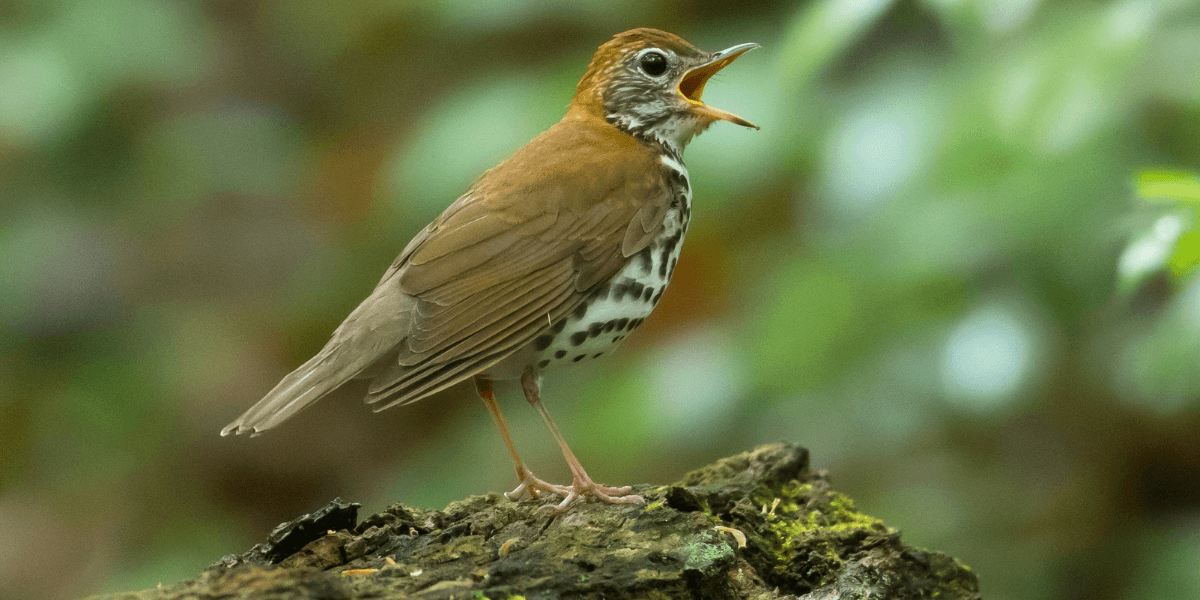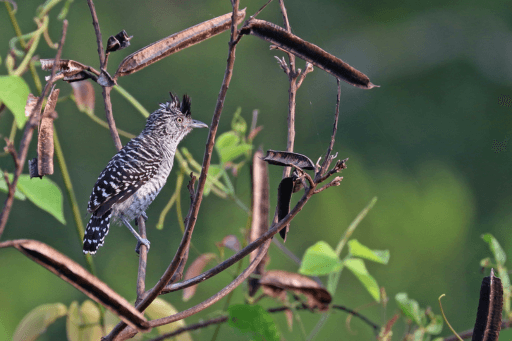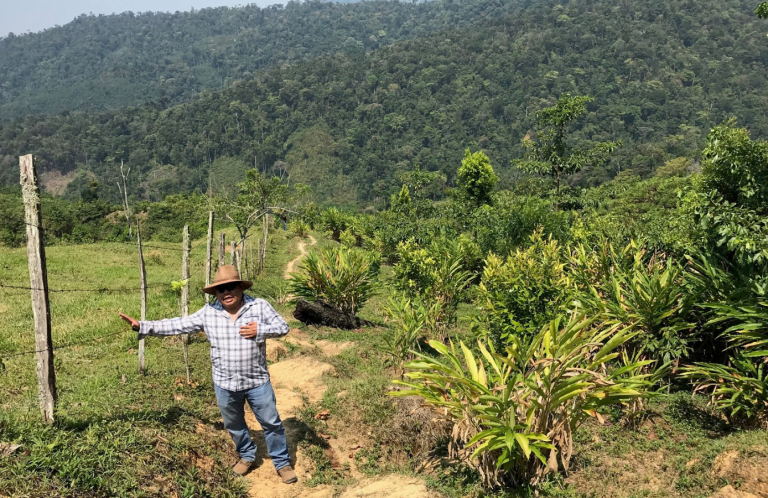BirdsPlus Index: A Simple and Innovative Tool for Measuring Biodiversity on Working Lands

In a mixed rubber and native tree plantation in Costa Rica, a Wood Thrush chuckles from a low, sheltered branch. Meanwhile, a Chestnut-sided Warbler chips while it forages as part of a large mixed-species flock that includes residents like tanagers and woodcreepers. The tanagers call amongst themselves, and the woodcreeper climbs high up the trunk of a nearby tree to announce its presence with a distinctive series of short whistles.
With the right tools and expertise, autonomous acoustic recording units paired with artificial intelligence (AI) can be used to identify these species-specific vocalizations. When these identifications are then paired with critical ecological data on the species themselves, and with remote sensing data like satellite imagery, American Bird Conservancy (ABC) can gain insight into the biodiversity present within areas such as that rubber plantation in Costa Rica.
ABC is developing the BirdsPlus Index to harness the incredible power of birdsong and calls to provide information about the biodiversity of working lands throughout the Americas. Such places, when managed correctly, provide vital habitats for everything from breeding grassland birds in western North America to overwintering migrant warblers in the Caribbean lowlands of Costa Rica. Using bird sound recognition models, the index will allow the impacts of conservation investments, such as planting shade trees within a plantation, to be directly measured over time. It will also be used to assess the biodiversity retained by a particular site, such as a coffee farm or a cattle ranch, and to compare this with other sites in a region, including intact forest or those with less bird-friendly management practices.
“Birds can serve as great indicators of how biodiverse a site is, telling us much about the conservation value of an area. We hope the BirdsPlus Index will make it easier to use bird vocalizations for this purpose,” said Daniel J. Lebbin, Vice President of Threatened Species at ABC.
Eavesdropping on Birds from a Distance
Traditional methods of measuring biodiversity have typically been expensive and challenging, involving meticulously counting plant and animal species during in-person surveys conducted by highly experienced professionals. This has made it difficult to measure biodiversity in a consistent and affordable manner, which in turn has made it challenging to accurately measure impact. An easy, affordable, and reliable way to measure biodiversity over time is essential, and that is exactly what ABC seeks to provide with the BirdsPlus Index.
Birds, just by going about their lives, can play an invaluable role in helping humans understand the biodiversity of a particular area. They are diverse, each species often inhabits its own characteristic habitats and, critically, most species regularly broadcast their own distinctive vocalizations. This also makes birds identifiable in sound recordings, especially with the help of well-trained AI models. Finally, because birds are proxies of biodiversity writ large, sites that are good for birds are good for biodiversity in general.
Now, by using a growing library of sounds to build regional models of expected biodiversity across time and across a diverse set of habitats, ABC can deploy microphones within a site to measure and compare that site's biodiversity with expectations. Importantly, the BirdsPlus Index goes beyond measuring simple species richness (the number of species within an area) and relies on a suite of curated life history datasets. These allow ABC to identify which sites conserve species of particular ecological importance or of high conservation concern.
“From terrestrial insectivores in the Amazon to long-distance migrants like shorebirds and warblers, entire groups of birds are declining rapidly and facing functional collapse. Working landscapes, if managed well, can support many of these species, and by using the BirdsPlus Index to help quantify the value of our investments in habitat management, we hope to reverse these declines before it's too late,” said Eliot Miller, BirdsPlus Index Manager at ABC.
###
American Bird Conservancy (ABC) takes bold action to conserve wild birds and their habitats throughout the Americas. Inspired by the wonder of birds, we achieve lasting results for the bird species most in need while also benefiting human communities, biodiversity, and the planet's fragile climate. Our every action is underpinned by science, strengthened by partnerships, and rooted in the belief that diverse perspectives yield stronger results. Founded as a nonprofit organization in 1994, ABC remains committed to safeguarding birds for generations to come. Join us! Together, we can do more to ensure birds thrive.
Media Contact
Jordan Rutter
Director of Communications
media@abcbirds.org




















































